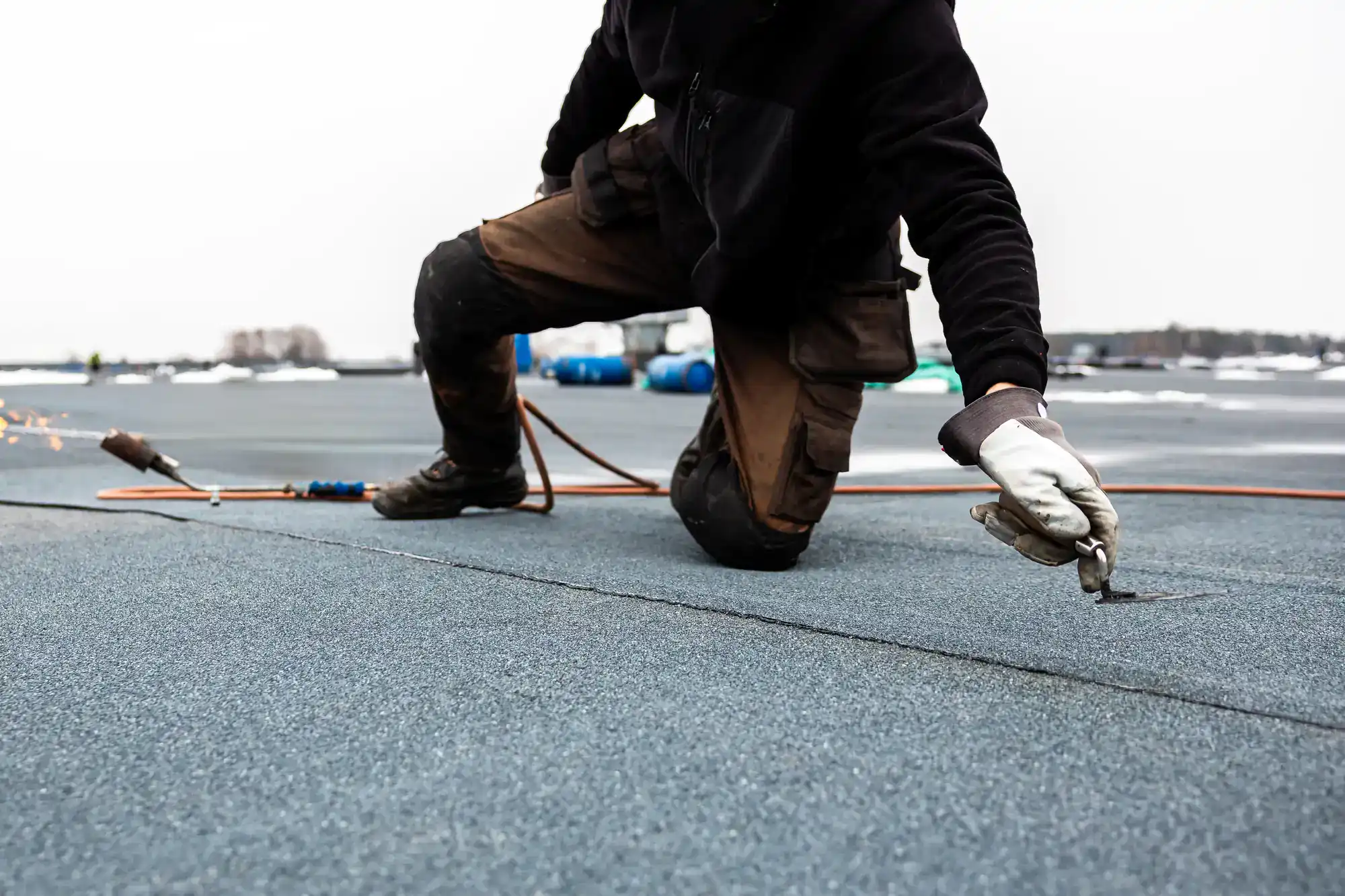
Hear from Our Customers
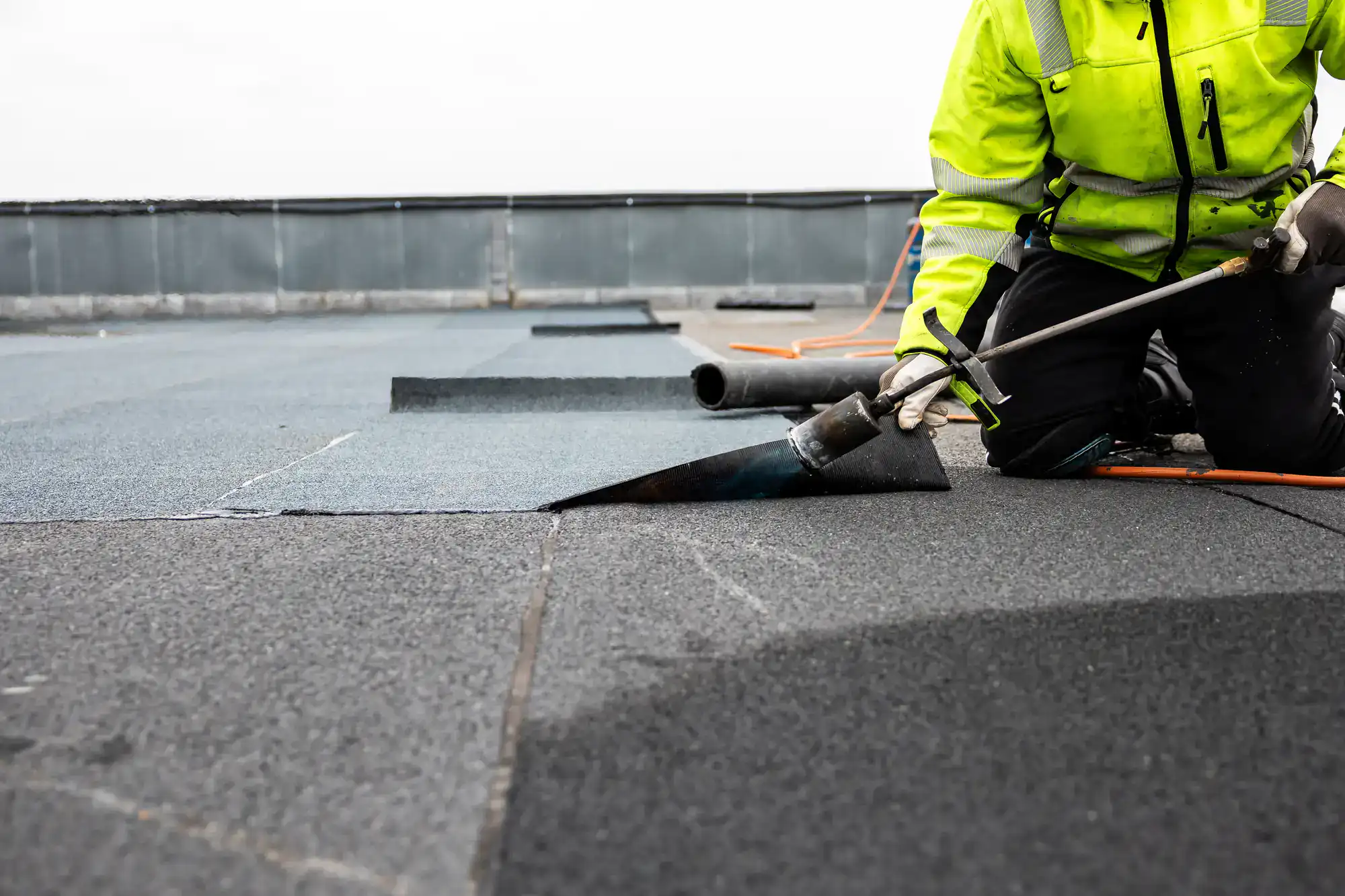
You get a flat roof that doesn’t pool water after every storm. No more emergency buckets during heavy rains or worrying about leaks damaging your property.
Your energy bills drop because proper insulation and reflective materials keep your building cooler in summer and warmer in winter. You stop dealing with the constant cycle of patch jobs that never really fix the underlying issues.
Most importantly, you get peace of mind knowing your roof is installed correctly the first time, with proper drainage and materials that can handle Hempstead’s weather extremes.
Expressway Roofing and Chimney Inc has been solving flat roof problems across Long Island for over two decades. We’ve seen what works and what fails when it comes to flat roofing in Hempstead’s climate.
Our team specializes in TPO, EPDM, and modified bitumen systems because we understand how each material performs in Long Island’s humid summers, freezing winters, and everything in between. We’re not general roofers trying to figure out flat roofs—this is what we do.
When other contractors walk away from challenging flat roof repairs, property owners call us. We’ve built our reputation on solving the problems that others can’t or won’t tackle properly.
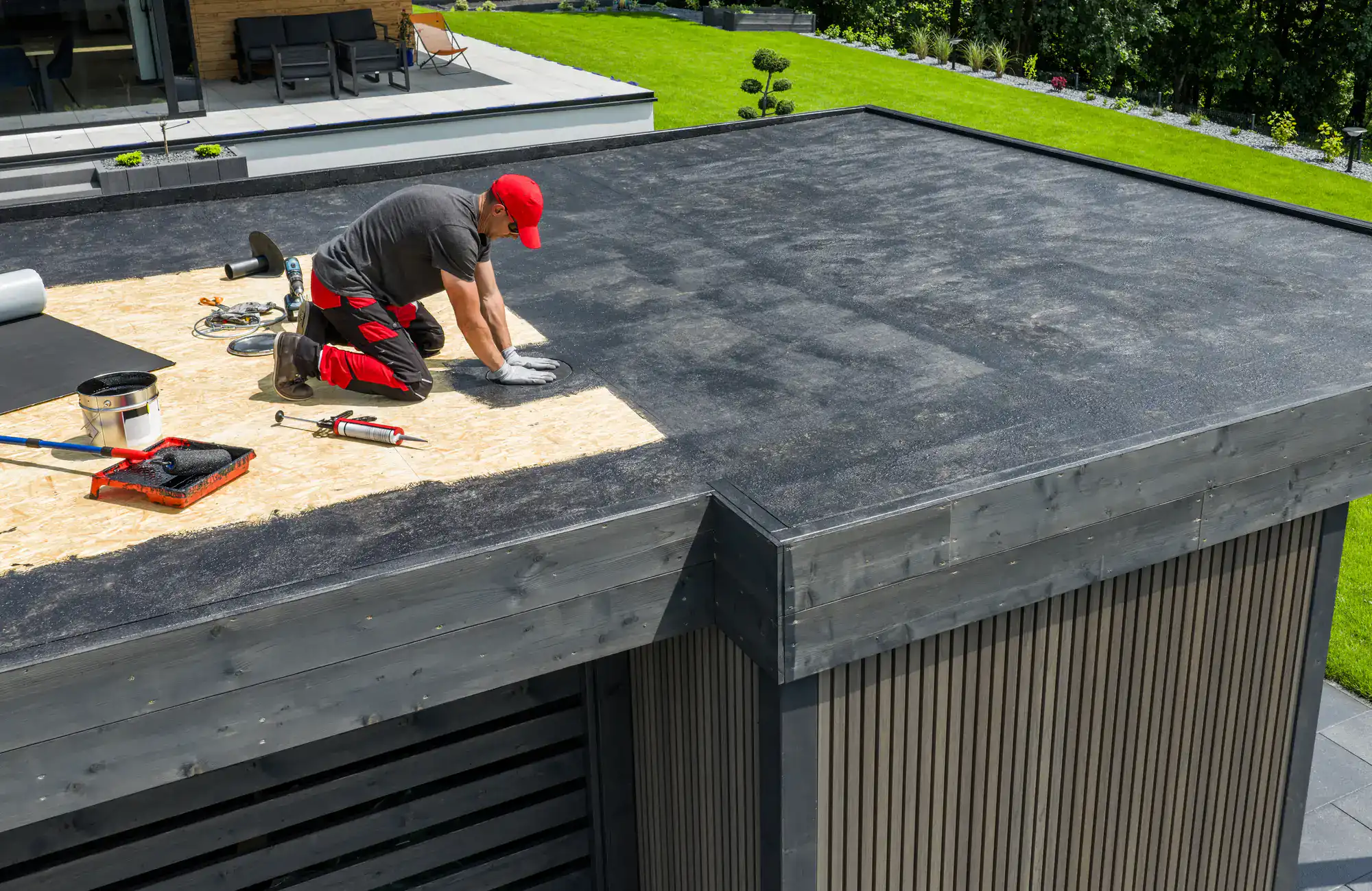
We start with a thorough inspection using professional tools to identify not just obvious problems, but underlying issues that cause recurring leaks. This isn’t a quick visual check—we’re looking for drainage problems, membrane failures, and structural concerns.
Next, we assess your specific situation and recommend the right material for your building and budget. TPO for energy efficiency, EPDM for durability, or modified bitumen for specific applications—each has its place.
Installation involves proper substrate preparation, precise membrane installation, and critical attention to seams and flashing details. We handle drainage corrections, ensure proper slopes, and install systems that actually work long-term. Every project includes manufacturer warranty compliance and documentation you’ll need if issues arise later.
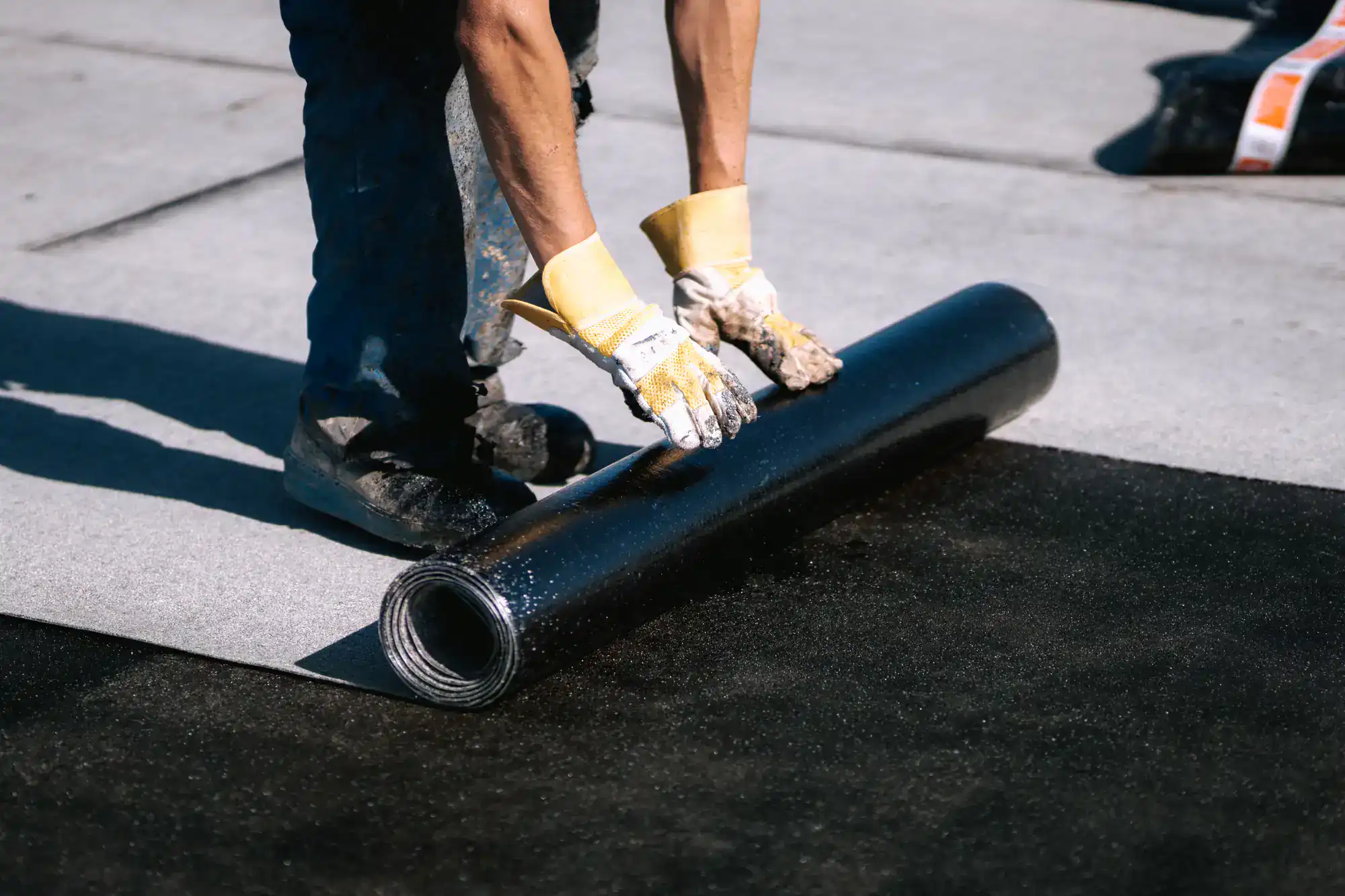
Ready to get started?
In Hempstead’s climate, material choice makes the difference between a roof that lasts and one that fails prematurely. TPO membranes offer excellent energy efficiency with their reflective white surface, reducing cooling costs during Long Island’s hot summers while handling temperature fluctuations without cracking.
EPDM rubber roofing provides exceptional durability and flexibility, crucial for buildings that experience significant thermal expansion and contraction. It handles ponding water better than many alternatives—important given Long Island’s heavy rainfall patterns.
Modified bitumen systems work well for specific applications where multi-layer protection is needed. These systems offer excellent puncture resistance and can be particularly effective on roofs with heavy foot traffic or equipment installations. We select materials based on your building’s specific requirements, not what’s easiest to install or most profitable for us.
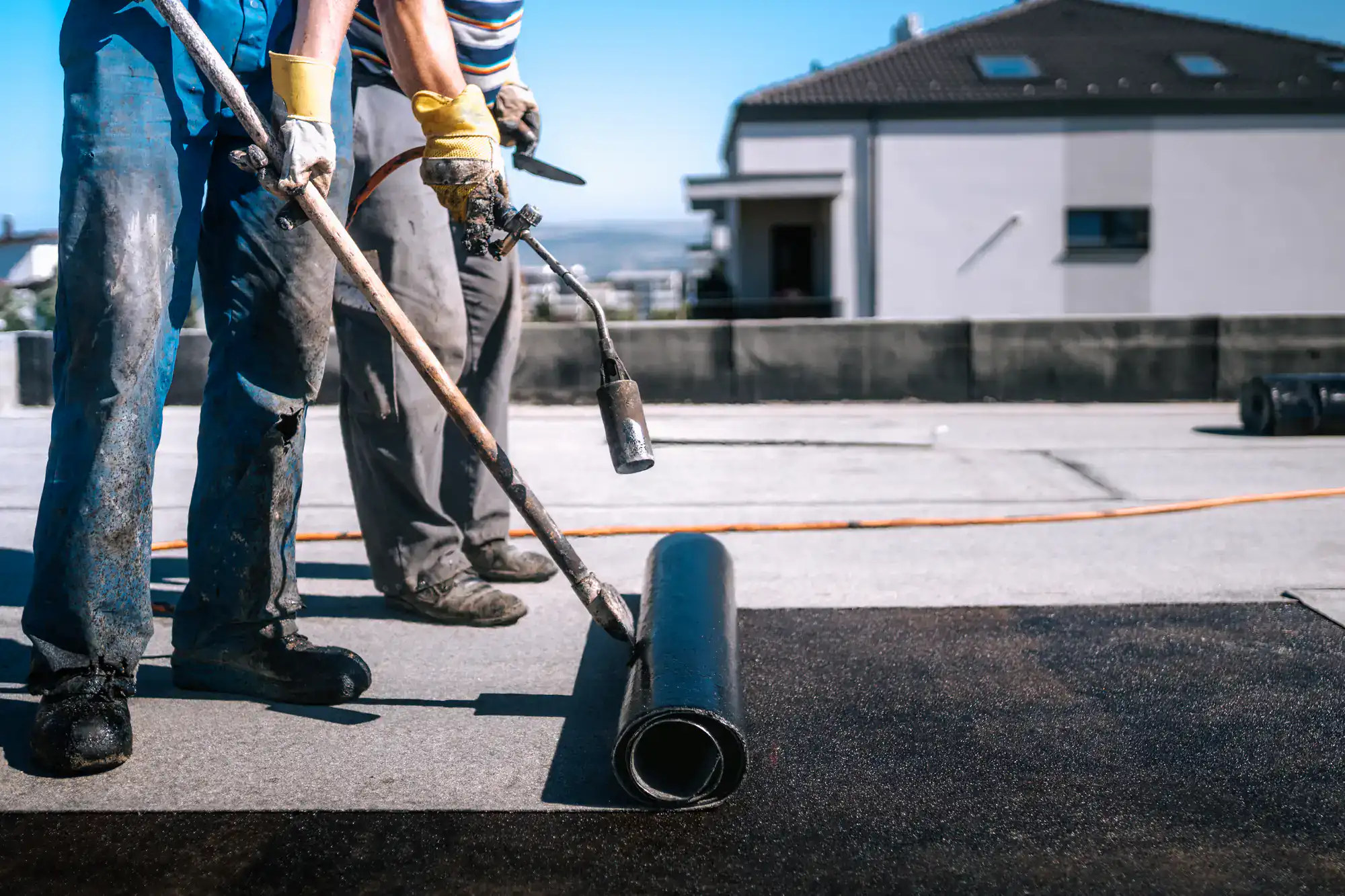
A properly installed flat roof in Hempstead should last 15-30 years depending on the material and maintenance. TPO systems often provide 20-30 years of service life, while EPDM typically lasts 20-25 years, and modified bitumen systems generally last 15-20 years.
The key factor isn’t just the material—it’s proper installation and regular maintenance. Long Island’s weather extremes, from humid summers to freezing winters with ice and snow loads, put significant stress on flat roofing systems. Roofs that receive bi-annual inspections and prompt attention to minor issues consistently outlast those that are neglected.
Poor drainage is the biggest threat to flat roof longevity in our area. Standing water accelerates membrane deterioration and can void manufacturer warranties, so proper slope and drainage system maintenance are critical for reaching expected lifespan.
Most flat roof leaks in Hempstead result from membrane deterioration, failed seams, or drainage problems that allow water to pond and eventually penetrate the roofing system. Flashing failures around roof penetrations like vents, HVAC equipment, or skylights are also common leak sources.
We use professional leak detection methods including visual inspection, water testing, and infrared scanning when necessary. The tricky part with flat roofs is that water often travels considerable distances from the actual leak point before it becomes visible inside the building.
Successful leak repair requires finding and addressing the root cause, not just patching where water appears. We trace leaks back to their source, assess the surrounding membrane condition, and make repairs that prevent recurring problems. Quick patch jobs usually fail because they don’t address underlying drainage or membrane issues.
Sometimes, but it depends on the condition of your existing roof and local building codes. If your current roof has only one layer, minimal damage, and proper structural support, a roof-over installation can be cost-effective and reduce disposal costs.
However, if there’s significant water damage, multiple existing layers, or structural concerns, complete removal is necessary. We also can’t install over roofs with standing water problems or inadequate drainage—these issues must be corrected first.
The decision requires professional assessment of your roof’s condition, building codes compliance, and long-term performance considerations. While roof-overs can save money upfront, they’re not appropriate for every situation, and we won’t recommend one unless it’s truly the right solution for your building.
Drainage problems are the most critical issue we address on flat roofs in Hempstead. Standing water destroys roofing membranes and voids warranties, so proper drainage is non-negotiable for long-term roof performance.
We start by assessing the roof’s slope and identifying low spots where water collects. Solutions might include installing additional drains, adding tapered insulation to improve slope toward existing drains, or in some cases, installing internal drainage systems.
Preventive maintenance includes keeping drains clear of debris, inspecting and maintaining scuppers, and ensuring gutters don’t back up during heavy rains. We also address ice dam prevention, which is crucial in Long Island winters when frozen drains can cause catastrophic water backup and interior damage.
TPO is a single-ply thermoplastic membrane that’s energy-efficient due to its reflective white surface, reducing cooling costs. It’s heat-welded at seams, creating strong watertight joints, and performs well in temperature extremes. TPO is cost-effective and offers good puncture resistance.
EPDM is a synthetic rubber membrane known for exceptional durability and flexibility. It handles ponding water well and maintains flexibility in cold weather, making it ideal for Long Island’s freeze-thaw cycles. EPDM is typically black, so it absorbs more heat than TPO.
Modified bitumen is a multi-layer system combining asphalt with reinforcing fabrics. It offers excellent puncture resistance and is well-suited for roofs with heavy foot traffic or equipment. Installation is more labor-intensive, but the multi-layer construction provides redundant protection against leaks.
Yes, we provide emergency flat roof repairs throughout Hempstead and Long Island. Flat roof emergencies often occur during storms when drainage systems become overwhelmed or high winds damage membrane systems, causing immediate leaks.
Emergency repairs focus on stopping active leaks and preventing further damage until permanent repairs can be completed. This might involve temporary patching, clearing blocked drains, or installing emergency drainage to remove standing water.
We respond quickly to emergency calls because water damage escalates rapidly with flat roofs. However, emergency repairs are temporary solutions—permanent repairs require proper weather conditions and time to address underlying causes. We always follow up emergency work with comprehensive assessment and permanent repair recommendations.